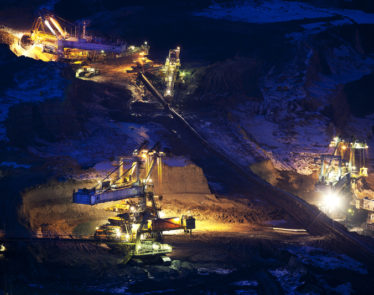
Almost out of thin air, it happens…Traffic rears its ugly head and cars start to slow down. Waze doesn’t say there’s any obstruction on the road, and yet, your commute is delayed 7 minutes. Suddenly, the traffic patterns change and you’re back to traveling at typical highway speeds. So what just happened?
Traffic experts refer to this phenomena as “phantom traffic jams.” If every car traveled at the exact same speed, changed lanes in perfectly syncopated patterns, these jams would not be a problem, but as any driver knows, no one on the road is consistent.
“These traffic waves arise from small perturbations in a uniform traffic flow, like a bump in the road, or driver braking after a moment of inattention. These phantom jams arise in the absence of any obstacles,” says Benjamin Seibold, a mathematician at Temple University. He goes onto explain that the small “perturbations” that occur: one car braking slightly, and the ones behind it brake more to avoid a collision, creates the traffic-inducing chain reaction.
While many engineers believe roads can be better designed to alleviate the obstacles that drivers fail to react to in time, thus causing phantom jams, experts believe the more innovative approach is to develop autonomous vehicles.
General Motors (NYSE:GM) Invests Autonomous Automotive Future
About four years ago, Kyle Vogt, one of the founders behind Twitch (NASDAQ:AMZN), had an idea for a self-driving car start called Cruise Automation. The startup was created to further Vogt’s dream of a driverless revolution, a world where fatal automotive accidents caused by inattentive drivers become an a thing of the past. At the time, automakers were working on vehicles with self-driving technology, but Cruise took this idea one step further. Rather than waste capital on designing and building a fleet of autonomous cars, the Cruise team built a mountable system to attach to any car, enabling the vehicle to be driven without a human behind the wheel.
“Ten years ago, people would’ve said that this is science fiction. But now, they’re not asking if, but when. There’s a perception that self-driving cars are coming and people are expecting them.”
–Kyle Vogt, Co-founder and Chief Executive Officer, Cruise
Given that the automotive industry and its manufacturers were already working their bumpers off to create self-driving vehicles, it was only natural that a company with potential like Cruise would attract investors, and eventually receive acquisition offers. General Motors (NYSE:GM) was the automaker with the highest bid, in 2016, when the company agreed to pay Cruise Automation “north of $1 billion” in a combination of cash and stock. In recent news, GM announced plans to expand Cruise’s engineering efforts to Seattle, the birthplace of tech giant Microsoft (NASDAQ:MSFT). According to TechCrunch, GM Cruise plans to set up offices in the Pacific Northwest to hire 100 – 200 new engineers by the end of 2019.
“To continue growing a team that is diverse and rich in talent, we feel that it’s important to explore talent pools outside of the Bay Area, and Seattle’s vibrant tech community and proximity to our headquarters in San Francisco make it a logical choice.”
–Kyle Vogt, Co-founder and Chief Executive Officer, Cruise
GM Cruise (GM), currently valued at $14.6 billion, has the capital necessary to make their move to Seattle as smooth as a ride taken in a self-driving car. Several months ago, Honda (NYSE:HMC) agreed to invest $2.75 billion in Cruise and its automotive parent company, GM, in an effort to develop and produce autonomous vehicles for the major Japanese automaker.
Happenings Around The Industry
GM’s acquisition has since sparked massive interest throughout the sector, with companies like Ford Motor Company (F) working to develop their own fleet of self-driving vehicles. Towards the end of October Ford Motor Company (NYSE:F) and Baidu (NASDAQ:BIDU), the Chinese internet company announced their plans to team up to develop autonomous-driving vehicles, in hopes of taking advantage of a potentially major disruption to the day-to-day of the automotive industry.
Ford’s (F) decades of automobile manufacturing coupled with Baidu’s (BIDU) “technological know-how and understanding of China” indicates possible technological breakthroughs just beyond the horizon, according to CNN. The US automaker has already retrofitted some of its vehicles with Apollo, Baidu’s self-driving technology and the two companies will begin testing the new franken-tech “on open roads in Beijing that are specially designated for [autonomous vehicle] testing.
Ford (F) and Baidu (BIDU) are not the only companies aware of the potential that driverless technology presents. Earlier this year, in August, Waymo, the self-driving sector of Google’s parent company, Alphabet (NASDAQ:GOOG), set up shop in Shanghai. The new business was suspiciously named “Huimo Business Consulting,” according to a business registration filing uncovered by CNN.
Even if experts say that a computer is much less likely to make a mistake resulting in a car accident, it is impossible to account for every potential outcome. In other words, no self-driving car will be crash-proof. These malfunctions can be life or death for passengers traveling in autonomous vehicles.
Back in March, Tesla (NASDAQ:TSLA) faced significant public backlash after one of their Model X SUV vehicles crashed into a highway center divider and exploded, taking the life of the driver in the process. The alternative-energy automaker’s stock dropped 15% at the time of the crash, trading at $257.78 per share. Tesla admitted that the cause of the crash was a malfunction in their “Autopilot system.”
Some Closing Thoughts
Autonomous vehicles are the future of transportation, this much I am certain. According to Forbes’ prediction, ten million self-driving vehicles will take to the streets by 2020. Imagine a world where cars aren’t owned but shared. Once you’ve driven yourself to work, rather than worry about paying for parking, the car will safely drop you off and head to where it is needed. Self-driving technology will not only revolutionize how we travel from place to place, but how we live every single day of our lives. A fleet of ambulances could be ready to dispatch at a moment’s notice and calculate the perfect route to tend to emergencies.
The possibilities are endless, and the automotive industry’s excitement and development of this technology only make the future a potential reality.
Featured Image: DepositPhotos/iqoncept











